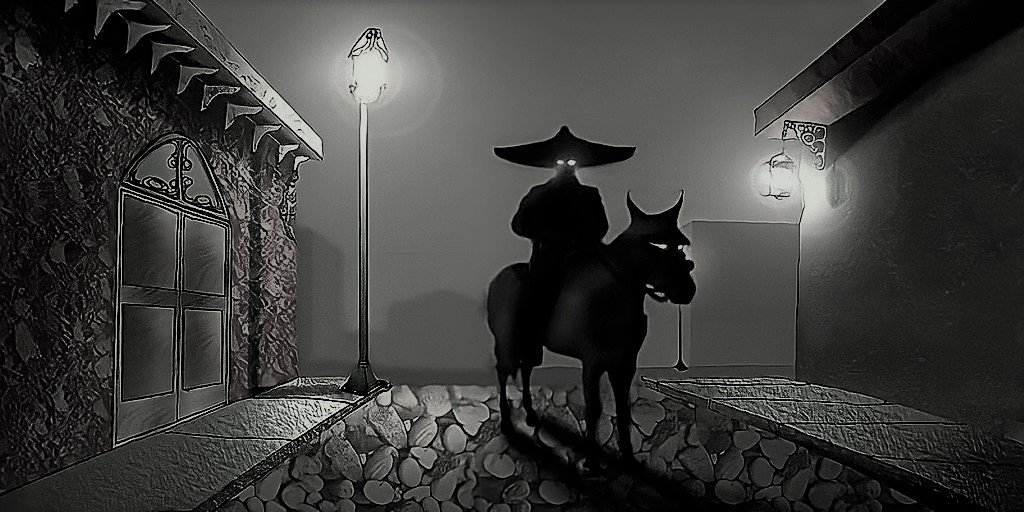The Jorōgumo Spider at Jōren Falls of Izu, Japan
In the city of Izu in the Shizuoka Prefecture of Japan, sits one of the country’s most popular tourist destinations, Joren Falls. But, according to legend, it’s also home to a shapeshifting creature known as the Jorogumo.
The Legend of the Jorōgumo at Joren Falls
Centuries ago a man from a town near Joren Falls decided to rest at the foot of the waterfall. After waking from a short nap he noticed webs had appeared around his legs. Not thinking much of it, he tore off the webs and threw them onto a nearby tree.
Moments later the ground shook as the webs ripped the tree out of the ground and dragged it into the water of the falls. Terrified, the man ran back to the town and warned everyone of what had happened. Many believed it to be the work of the fearsome Jorogumo and travel to the falls was restricted.
Sometime later, a woodcutter from another village was passing by the falls when he noticed a beautiful woman sitting at its base. The woman called him over and within seconds of meeting her, he was in love. For the next several days he visited her but soon noticed that after every visit he was weaker than the day before.
Fearing something supernatural was going on, the woodcutter visited a nearby temple and spoke to a Buddhist priest who instantly realized he had fallen for, what he called, the “Jorōgumo mistress of the waterfall”.
On the woodcutter’s next visit to the waterfall, the priest accompanied him. Upon arriving at the falls, the woman noticed the priest and let out a terrifying screech. She jumped into the water changing her shape into that of a large spider.
The Buddhist priest began chanting a sutra or prayer to weaken the jorōgumo but he and the woodcutter were encased in its webbing. With the woodcutter’s help, the two broke free of the webbing and ran from the falls having survived their encounter with the deadly jorōgumo.
Unfortunately, the woodcutter couldn’t get the woman out of his head and despite knowing her true form, he wished to be with her. The following day he returned to the waterfall and let the jorōgumo encase him in her webbing. The woodcutter was then dragged into the water and never seen again.
Other Versions
Since these legends are centuries old and began as oral legends, it’s not surprising that there are several variations that make slight changes to each story. One of the biggest changes to the stories includes the man who rested at the waterfall not being able to remove the webbing around his feet in time. This led to him being dragged into the water and found dead floating in the water sometime later.
Another change to the legend is a more mystical telling of the woodcutter story. After the monk and he escape the jorōgumo, the woodcutter wished to marry the jorōgumoand went to visit the mountain tengu for its blessing.
Tengus are another type of supernatural being (often depicted like a bird or with bird-like properties) that over the centuries have changed from demon-like malicious beings in stories to more of a deity that protects and oversees forests and mountains.
Unfortunately for the woodcutter, the mountain tengu denied his request to let him marry the jorōgumo but this didn’t deter him. The woodcutter returned to the waterfall and let the jorōgumo take him into the water.
One last major alternative to the legend has the woodcutter instead drop his axe into the waterfall accidentally. The jorōgumo taken the shape of a beautiful woman emerges from the water and returns his axe but tells him to never speak of what he saw.
Though he agreed, as the days went on the woodcutter had an unwavering urge to tell someone what happened. One night while drunk, the woodcutter told his friend what had happened and with the weight off of him, the woodcutter grew extremely tired. He immediately fell asleep but his friends noticed a web-like string had appeared on the woodcutter's leg.
The woodcutter was pulled and dragged into the forest seemingly never waking up from the jarring movements. The following day several from the village found the woodcutter dead, floating in the waters of Joren Falls.
Unknown Origins
As the legends are centuries old there isn’t a way to tell when and where the legends started. We know that spiders with special abilities have existed in Japanese mythology for centuries with some examples dating back to at least the 14th century.
The picture scroll Tsuchigumo Soshi from the 14th century depicts the legendary tales of Minamoto no Yorimitsu, also known as Minamoto no Raikō, fighting and defeating a large spider creature known as the tsuchigumo.
Though this is a legend, Minamoto was a real regent from the late 10th century and early 11th century. Due to his military exploits for the Fujiwara clan, he eventually became governor of the Izu province which would later become the Shizuoka Prefecture in Japan. So it’s not surprising that a legend of another monstrous spider, this time the Jorogumo mistress in the Shizuoka Prefecture was also passed around centuries later.
There are also various others legends of the jorōgumo in parts of Japan with their own stories of the deadly spider masquerading as a woman attempting to entangle men with their webs. Some believe the stories are there to warn men to stay faithful to their wives as Jorogumo translates to “whore spider”.
But others believe these spiders only transform into mythical beings due to an evil influence and the stories are about vengeance or revenge.
Interestingly, Jorogumo is also the name of a real species of spider also known as the Joro Spider, that is more often found in Asia and, recently, parts of North America. While they are not aggressive or poisonous, the female Jorogumos are extremely large in comparison to their male counterparts, reaching up to four times the size.
Sorry
Luckily there haven’t been any recent reports of the Jorogumo shapeshifting into a beautiful woman and this legend can continue as just a myth.
Other Sources
Learn a Little Bit of Everything!
Myths, Mysteries, & Monsters
















